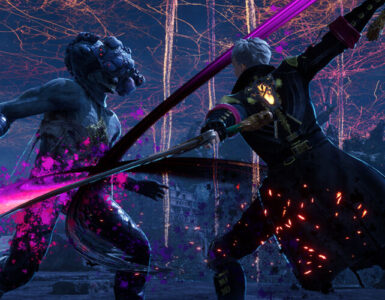There is a certain appeal when it comes to playing notoriously challenging games in the same mould as Dark Souls. However, it also has become somewhat of a tired phrase to keep calling something “the Dark Souls of” a certain medium or genre.
This also applies to the games within the genre borne out of FromSoftware’s iconic legacy. And for developers aiming to take the Souls-like genre to greater heights, there seems to be a certain pressure when it comes to making a new title and keeping it fresh, without seeming like too much of a repeat of the original.
And with a game like Hellpoint by Cradle Games, the pressure to deliver big on the Souls-like genre has never been greater. Developed on the back of a successful Kickstarter campaign in 2017, this sci-fi take on the genre aims to give players that same intense, balls-to-the-walls, die-and-try-again difficult gameplay experience as seen in the original games by FromSoftware. And with what little budget the Canadian dev had in its coffers, it still managed to put out a decent, if slightly flawed, version of the formula that made the genre so beloved.
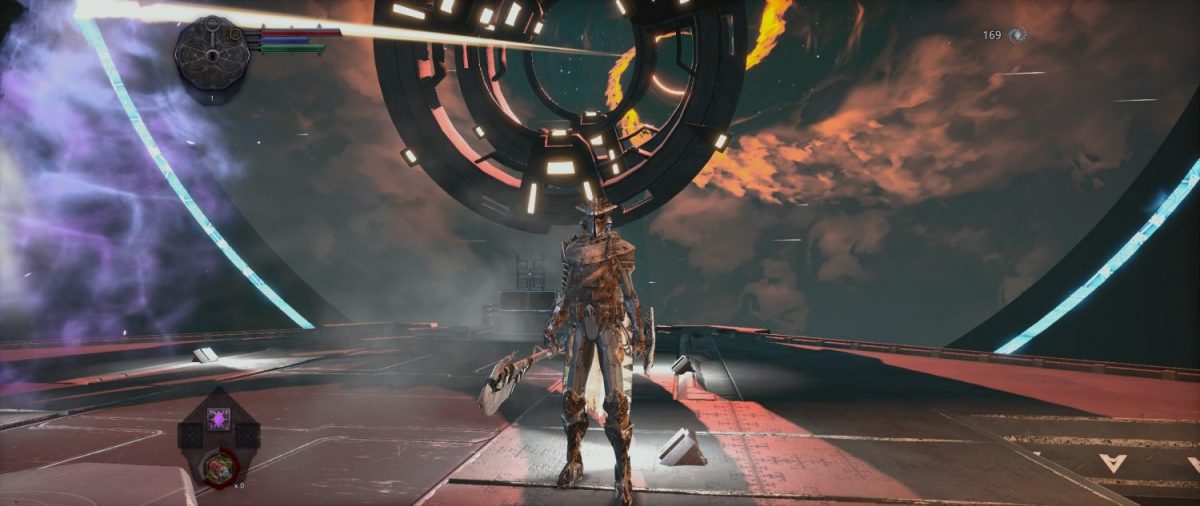
In Hellpoint, players take on the role of the Spawn, a creation of the Author, an AI that resides in the now-derelict space station, the Irid Novo. It is up to the player to explore its various facets, clearing out the various monster-filled halls, all in an attempt to reclaim the Irid Novo and return it to its former glory.
Arguably the strongest point of (heh) Hellpoint is its atmosphere and tone. Imagine being the only living or sane person in a space station designed to house a small colony of people (okay, to be fair, a lot of films explore this notion, but it’s not exactly the easiest feat to pull off, but Cradle Games seems to have gotten the formula right).
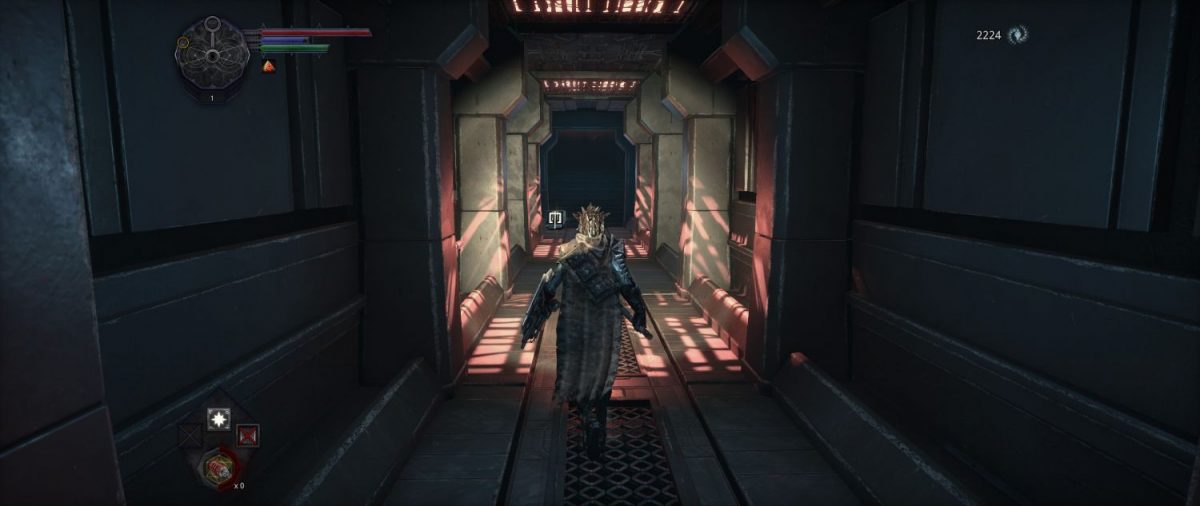
The juxtaposition of just a single life form against the Irid Novo’s many empty, sprawling hallways evokes a melancholy note. While this isn’t exactly the most horrific of sci-fi horror, what Cradle Games has done here is more atmospheric horror rather than the cheap jump-scare variant. There is just something harrowing about walking across a massive, empty hallway with a lone enemy sitting by in the corner. The slightly minimalist aesthetic of the levels themselves does add to the melancholy atmosphere of the game, which does play to the scenario posed by the narrative.
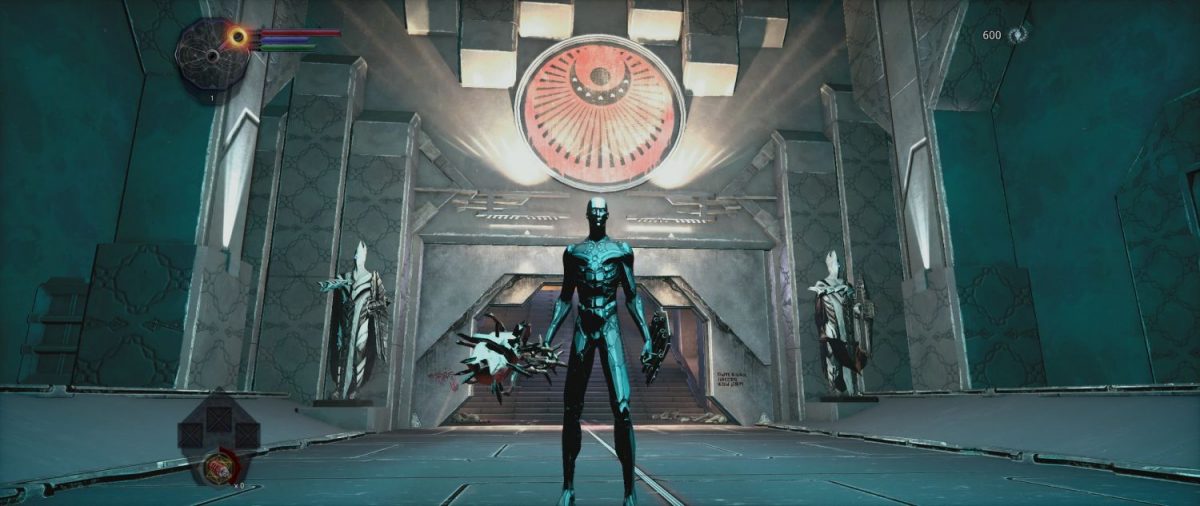
The typical gameplay loop for Hellpoint is as such: explore the level, kill various enemies that roam the area to earn Axions (the game’s main currency), open various doors and shortcuts, eventually make your way to the boss room, defeat them to unlock the next interdimensional Breach (this game’s version of the classic Bonfire checkpoint), and rinse and repeat. And of course, die and you’ll lose all Axions you’ve earned up until that point, and have to backtrack to the area where you perished to continue your progress, or simply start from scratch and get those hard-earned Axions all over again. Early on in the game, you’ll uncover the Observatory, the game’s main hub, where you’ll be doing most of your upgrading and augmenting by spending Axions and materials found across your playthrough.

While most Souls-like veterans will be very familiar with this gameplay loop, there are various elements that set Hellpoint apart from the usual. Firstly, while regaining your Axions seems like an easy feat, it might not always be as straightforward as one might think. Sometimes, a green AI-controlled “ghost” of your character’s avatar can be seen wandering around the area where you died. Similar to spirits in Dark Souls, this ghost will try its darndest to kill you, and will fight as if controlled by an esports player, so you might have to work hard for your lost Axions if you want to retrieve them again. This is just one of the many ways in which Hellpoint changes things up, which is always refreshing.
Another way in which Hellpoint switches the formula up is its weapons system. Players can equip up to three different kinds of main hand and offhand weapons each. And here’s the main catch; players aren’t limited to what they can equip on either hand. As such, one can dual-wield a rail gun and an axe, or even two railguns. This alone makes the combat so interesting, as players can literally come up with their own playstyle and get away with just any build they choose.

However, while dual-wielding is always cool, those who prefer to wield one weapon with two hands will be thoroughly disappointed to find out that Cradle Games has, bizarrely, left that option out. While it is cool to wield two greatswords and rifles, it is always bizarre to not be able to swing or fire them with both hands. We imagine it might even diversify playstyles even more, so hopefully Cradle Games would look into this issue and include it in a future update.
Combat in Hellpoint is a generally solid affair. Where Dark Souls is slow and methodical, Hellpoint assumes a more Bloodborne-esque speed, encouraging players to utilise the speed of the Spawn’s dodge and go in, hack at the enemy a few times, before dodging out of their big, sweeping attacks. Aside from typical light and heavy attacks, there are also dodge attacks, and the super-satisfying jump attack, which deals quite a bit of damage. Depending on your weapon type, it changes up how you might want to approach combat, as it consumes stamina.

Taking damage will no doubt force players to heal up using the Healing Injection, which acts as the game’s take on Estus/Healing Flasks. However, instead of having Healing Injections replenish every time one rests at a Breach, they only recharge after each successful hit of a melee weapon. While this is an interesting take on the healing system, it could potentially be the bane of players who choose to take up a ranged playstyle, as it would force them to go up close and personal just to replenish their Healing Injectors, which is contrary to their build.
In general, Cradle Games seems to have gotten the combat mechanics down to a T, which is generally very satisfying, given how action-oriented Hellpoint’s combat is, but what might put players off (and it certainly has for us) is the iffy hitboxes for various melee weapons. At times, we found that our greathammer-like Pillar seemed to not deal damage to the enemy, despite visually seeing it make contact and actually see blood spurt out. While this only happened a few times, it has indirectly led to the death of our Spawn at times, as it made us miss out on a precious final hit of the boss at our last chunk of stamina, leaving us vulnerable like a lamb for slaughter. It can lead to those frustrating moments, which is why Cradle Games needs to fix this issue as well.
Speaking of which, the enemies in Hellpoint are the stuff of nightmares. One definitely can see elements of Dead Space, Hellraiser and Alien thrown into the mix as well when one traverses the Irid Novo. Enemies range from your run-of-the-mill zombies, which, admittedly, dominate the early stages of the game, to more bizarre and grotesque creatures, such as crawling heads and towering minotaur-like beasts.
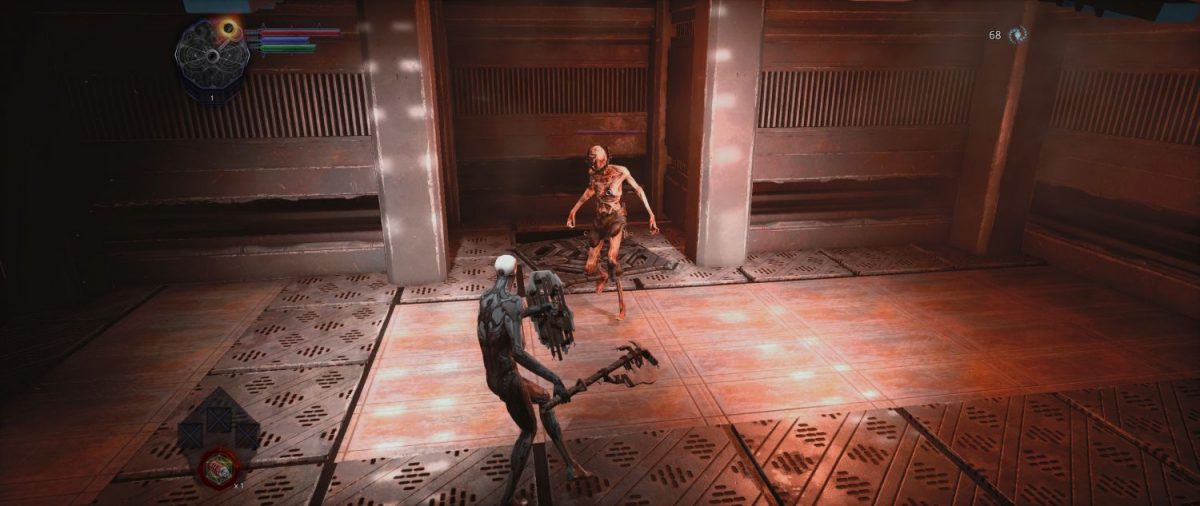
While their designs certainly add more flavour to the dark and murky atmosphere that Hellpoint presents, they don’t actually pose much of a threat individually. Most of these enemies lumber around lazily, and take far too long to wind up their super-telegraphed attacks. On the occasion, there would be a much speedier foe streaking across the screen to demand your attention, but for the most part, one can easily run circles around these creatures and give them a good beating. It is interesting that there is the unique Black Hole system in Hellpoint, though, that causes enemies to respawn after a set amount of time, which means the danger is ever-present and keeps players on their toes when traversing previously-cleared rooms, with the prospect of a much tougher enemy roaming the halls making backtracking even more intense at times.
While the regular enemies are relatively easy to trounce, it is the bosses that make Hellpoint a little more interesting, and rightly so given that bosses are also a much-hyped factor in any Soulslike. These range from ghostly figures, to what seem to be based on mythical creatures, to even straight-up ripoffs of gods of certain pantheons. Each boss fights distinctly different from another, which is great as no two boss fights in a Soulslike game should be the same. Their difficulty does feel fair for the most part, as we found ourselves rearing for another go at certain bosses that have pummelled our sorry behinds to the ground one too many times. It’s all about taking the time to study their movements and telegraphs to be able to master their mechanics and best them eventually.

However, like most other enemies in this game, these bosses also suffer from strange hitboxes, where their attack would suddenly connect even though they clearly did not touch the Spawn. Again, this is a bug that needs to be addressed, but then again, boss fights have usually felt very satisfying in our experience.
And it wouldn’t be a Souls-like game without an interconnected game world. It only makes sense given the setting is in a single space station, so why wouldn’t all the levels be interconnected? At the start, players are of course limited to certain areas, and can only make progress after defeating bosses and/or pressing certain levers in other locations. Seeing that a set of stairs leads to a door that opens up to reveal a much earlier part of the game is always satisfying to see, and having a shortcut.
The ability to jump also makes things a lot more interesting in this game, as players will occasionally find some opportunities to test their platforming skills. This certainly makes the exploration part of a Souls-like game more interesting, as one would need to rely on timed jumps in order to reach certain areas, especially secret ones to get certain items.
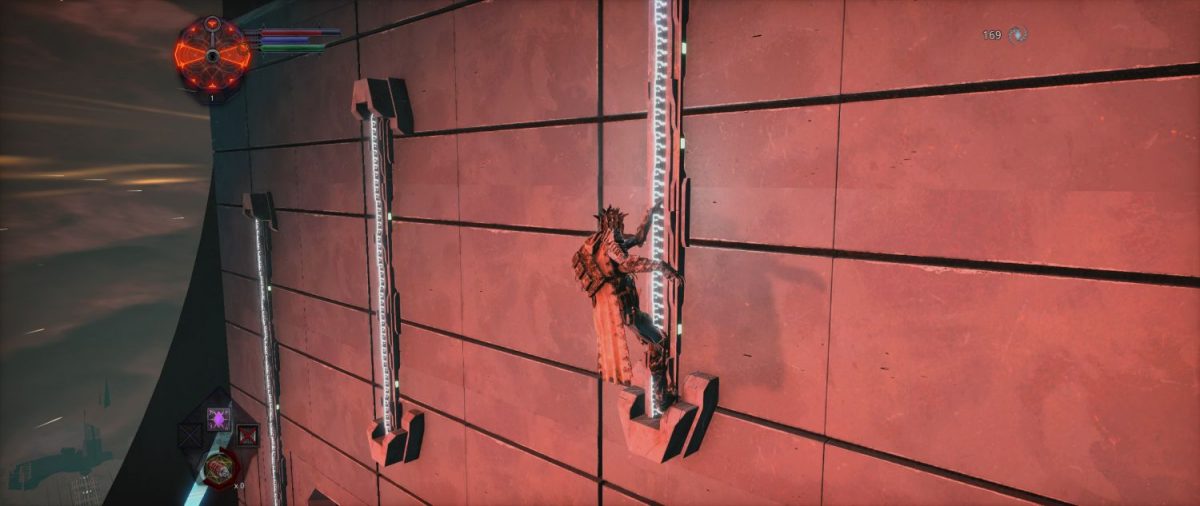
While this sounds great on paper, it falters slightly in execution simply due to how clunky the animation is. Even with a controller, we’ve found it rather tough to get used to the janky running and jumping animations, as the Spawn would at times jump too lightly or talk one or two steps after landing. Usually, this means they’ll end up missing the ledge or walking past it, falling to their death, losing precious Axions in the process. Despite how limited the budget Cradle Games was working on, one can’t help but feel that this platforming section needs work as it can be quite a frustrating affair at times. There is potential for it to be a truly interesting new venture for the genre, but at present, it needs reworking or refining somehow.
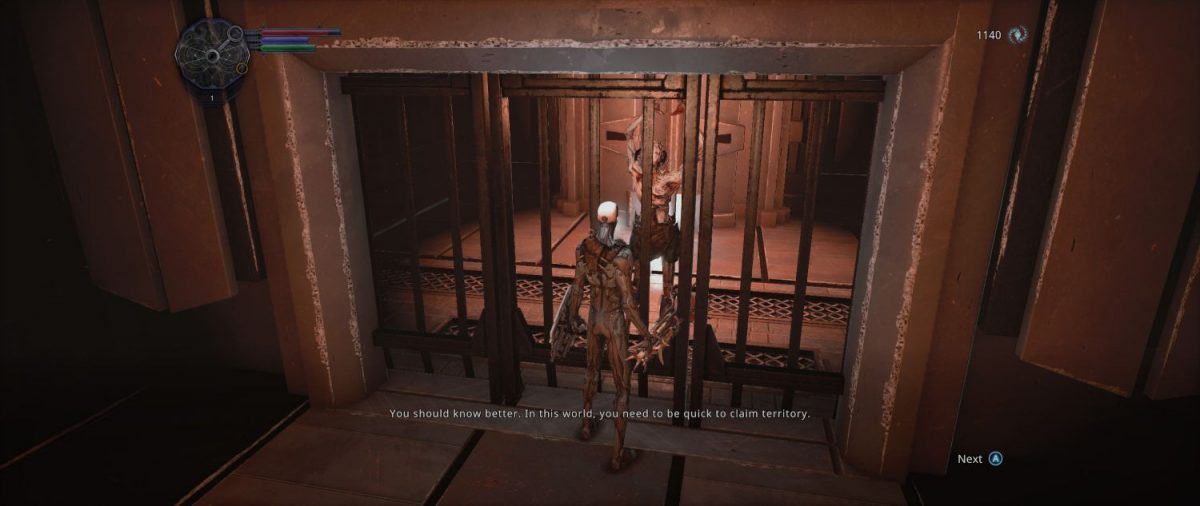
When all is said and done, Hellpoint is a diamond in the rough for the Souls-like genre. For a small studio, Cradle Games is clearly very inspired by FromSoftware and various sci-fi horror movies, books and games, and have meshed both elements together to end up in an otherwise solid, albeit clunky and unpolished, title that has potential to punch far above its weight.
GEEK REVIEW SCORE
Summary
Cradle Games’ attempt at keeping the Souls-like genre alive is a commendable, albeit flawed, one. Its intrinsic weapon system and atmospheric design indicate there is potential for Hellpoint to be a truly awesome carrier of the Souls-like torch, but ultimately falls flat in execution. Still, it’s a great way to scratch your Dark Souls itch, and for a really attractive price.
Overall
6.9/10-
Gameplay - 7/10
7/10
-
Story - 6/10
6/10
-
Presentation - 7/10
7/10
-
Value - 7.5/10
7.5/10
User Review
( votes)Marion has a serious RPG addiction. Sometimes it bleeds into real life; he forgets to sleep because he thinks he has a Witcher’s body clock. Forgive him in advance if he suddenly blurts out terms such as “Mind Flayer” and “Magic Missile”, because never once does he stop thinking about his next Dungeons & Dragons game.





